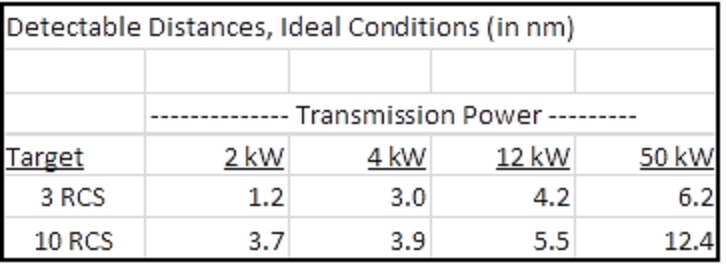#RadarBlinded
We’ve written about #Radar and its advances. But you need to understand what you are seeing, may not be seeing and why. This column is about that.
Best Case – What Can It See?
Radar is one of those technologies where math and physics dominate. To make matters worse for Americans, much of the math that relates to surface areas is in metric scale and the speeds are in meters… But remember that a meter and a yard are close enough in size that, for the layman, you can read “yard” when you see “meter” and it will work for you from the standpoint of understanding.
Well, what does this mean? Surface area reflection – THE key item when it comes to what can we see under what conditions – is a measure called “Radar Cross Section” (RCS). The RCS of an object, expressed in square meters (remember that a square yard is an area 3 feet x 3 feet…), measures the strength of an object’s signal returns to your device. Objects with big RCS’s return signals from a greater distance and through tougher weather conditions than any object with a lower RCS, at a given amount of power output from your radar. So, what are typical objects in terms of square meters (yards), as measured from stem to stern to gunwale? A tender is roughly 3 RCS (9’ long x 1’ gunwale); a typical recreational boat would be roughly a 10 RCS (18’ long x 1.5’ gunwale); a Navy cruiser might be about 10,000 RCS!
What does that mean in distance, which is the key? See the table below:

If some of these distances seem short, they are because small objects with a small amount of power will not, given the laws of physics, throw a big signal back. And this is under ideal conditions. Sidebar: If you are in a small vessel, add a radar deflector to make you look larger than you are!
In the column on radar, we noted that one of the issues to keep in mind is that heavy seas can cause you to see even less than you think since, as you approach the crest of the wave, your radar’s beam is shooting into space and, while sliding down into the trough, it is shooting into the water. Counter-intuitively, perfectly flat seas actually work against range since you don’t pick up the little big of extra distance that small waves will give you – kind of a paint brush approach… It is like being on your tipey-toes (small waves) versus flat footed…
What Really Hurts?
Fog, rain and high waves are increasingly dense and thus impair “see-ability” as they get denser. For example, fog where you can see roughly a tenth of a nautical mile (200 yards) has no meaningful effect. If you can only see 20 yards, that is a real problem. A light to moderate amount of rain (1/2 inch per hour) is not going to cause any serious attenuation. A moderate to high amount of rain (1 1/2 inches per hour) is definitely going to close up the range, particularly for longer distance. Waves up to a foot, which isn’t much, have no effect and in fact help spread the radar beam. Also, perversely, the wave action will interfere with the radar ability to detect an object nearby since the waves surround you as well as the target. In 5-foot seas, a small boat (10 RCS, above) becomes nearly invisible to radar when the range decreases to 1 nautical mile… In short, once the wave height (trough to peak) reaches a boat’s freeboard height, the vessel becomes very difficult to see – as range decreases!
What Helps?
Any vessel can increase its visibility by adding a radar reflector. Mounted as high as possible, it can simply be a shoe-box covered in aluminum foil. Being more visible, no matter what your “RCS”, is better than not. Of course, there are commercial devices that you can find on the internet such as RadarFlag, Hamilton Marine, Davis and EchoMax, amongst many… You can even mount an old spaghetti pot if you want! Just knock a hole or two in the bottom so it doesn’t fill with rain water…!
See and be seen is our motto. Should be yours too!
